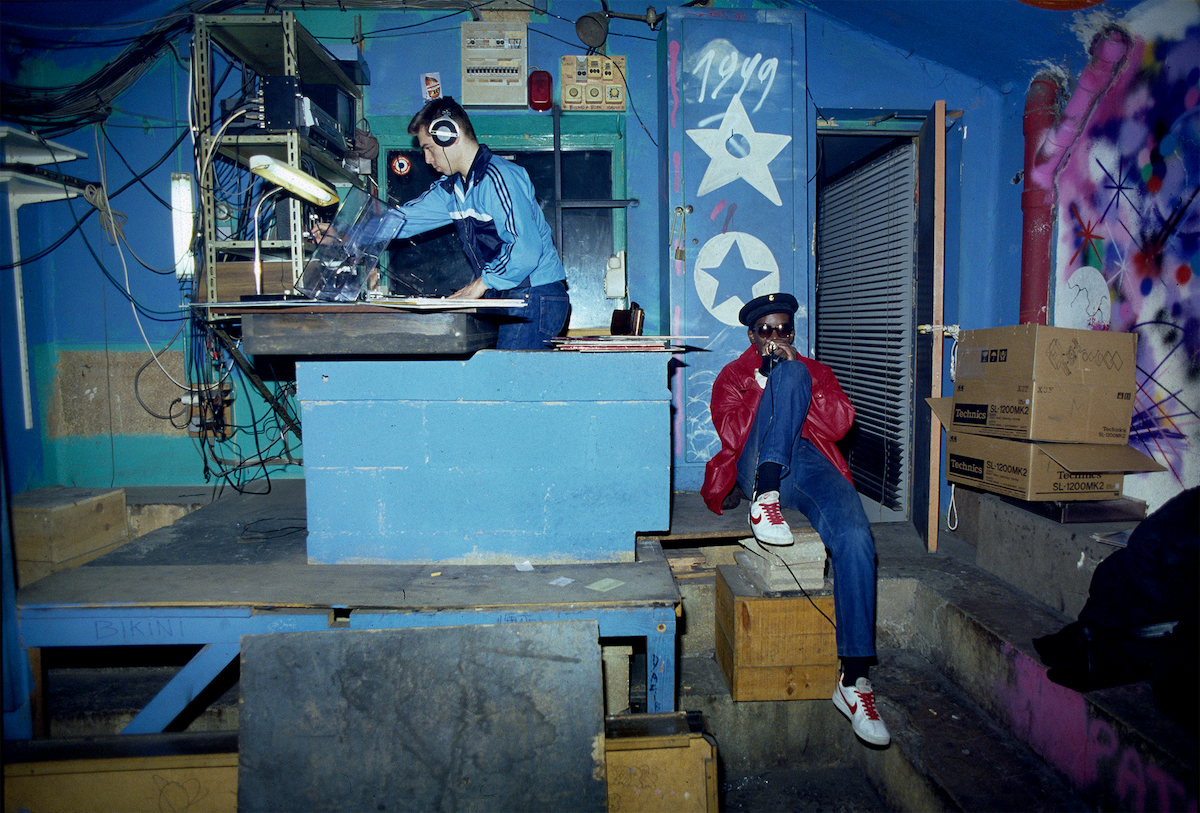Presented at the Philharmonie de Paris since December 17, the exhibition “Hip-Hop 360. Glory to street art” brilliantly returns to the 40 years of the genre, between pioneers and a new generation. An unmissable event.
From the entrance, the tone is given. Equipped with an audio headset given on arrival (included in the price of the ticket), the visitor finds himself in front of a giant screen where the major dates of the hip-hop movement scroll, all in music. We learn about the birth of the genre in the black ghettos of New York in 1973, the first dedicated program in 1984 or the use of autotune by Booba in 2008 and the recognition of breakdance as a discipline for the next Olympic Games in 2019. The feet are already tapping the rhythm.
From contempt to popularity
The exhibition, divided into six distinct parts, attempts to retrace the history of the genre, long despised. If it has now invaded cultural space, this victory is relatively recent. When hip-hop arrived in France in the 80s, it was a real UFO that struck a generation, rocked by the pop music of their parents. The Hexagon manages to develop an original hip-hop culture, through music but also graffiti and even breakdance. One of the riches of the route is based on the plurality of media: video, sounds, various and varied material objects … The visitor finds himself immersed in immersion. Thanks to the headphones, you can connect to different sockets to learn more, or listen to exclusive sounds.
7 MC Solaar at the end of his 45 rpm (Bouge de là), the first golden single from French rap, with the neighborhood kids (1990) © Maï Lucas
The first part, Back to basics, takes us to the Bronx of the 70s. We discover in particular the magnificent photos of the photographer Sophie Bramly, as well as the French dancer Martine Barrat, facing New York at the end of the 60s. Machine enthusiasts will be able to observe the Vox V829 King Percussion, previously used by The Beatles and Kraftwerk. This drum machine will be renamed the beatbox when Grandmaster Flash uses it for the production of its songs. This use in rap then marks the entry of the musical style into an electronic rather than an acoustic practice. This kind of information, distilled over the course of the exhibition, is provided by specific cartels.
A few thousand kilometers, ucrossing the Atlantic, and here we are in the second part, Built to last. Now in France, the genre is winning over the general public. In 1984, the world’s first hip-hop show appeared on screens: HIPHOP, moderated by Sidney. A television broadcasts parts of the show, in a reproduction of a cozy living room from the 80s. If the media effervescence quickly subsides, a handful of activities bring the genre to life. Dedicated places are emerging, reinforced by the contempt of the media and institutions for their culture. While passing in the room, do not forget to go to the room “On flood the waves”, dedicated to the radio. You will be able to listen to programs there, but also to learn more about the material of the time.
Concerts in immersion
Another essential quality of the exhibition is based on the diversity of the angles approached. After the party visit Boxing with the words, space Ticaret Social Club is interested, for example, in fashion. The Ticaret store, opened in 1986, quickly became the real epicenter of Parisian b-boys. You will learn the crucial importance of the gold chain, the different stylistic developments, or the link to the different brands. The penultimate stop, Looking For The Perfect Beat, will particularly appeal to enthusiasts and hackers of machines. She is interested in the work of beatmakers and producers. A lot of fascinating information is mentioned in particular around the mixtape (special mention on the magnificent wall of cassettes) and the sample.
Finally, the last space of the exhibition – and surely the strongest emotionally – unveils a true 360-degree installation. At the heart of a circular space, seated or standing, you can experience unpublished performances and recordings made for the exhibition. Among the notable lives: NTM, Ideal J or Diam’s. In this period of pandemic, and following the new measures prohibiting standing concerts, this immersion in concert offers a privileged, almost ceremonial moment. And makes you want to dance, like in the world before.
 12 Fab 5 Freddy & Uncle O at Bains Douches, Paris (1984) © Sophie Bramly
12 Fab 5 Freddy & Uncle O at Bains Douches, Paris (1984) © Sophie Bramly

![Cet ouvrage exceptionnel ravira le regard des amoureux du hip hop des origines.<br />
[© SOUL JAZZ RECORDS]](https://static.cnews.fr/sites/default/files/styles/image_375_210/public/yo-hip-hop-book-102-taille1200_619bd56a55a65_0.jpg?itok=fO9XP3e1)